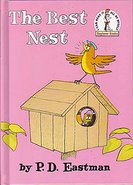 The Questions
The Questions1)What was the most dangerous pesticides ever used that was mostly used in the 1950's?
2) Can pesticides effect bodies of water such as lakes, streams, rivers, cricks, or even privately owned wells? How?
3) What are the different types of pesticides?
4) How many people are poisoned and become sick because of exposure to pesticides a year?
5) The United States has banned many kinds of pesticides from our country but hasn't banned them from producing dangerous pesticides and exporting them to other countries. How much do you think the United States exports every hour?
6) About how many people die a year because of pesticides?
The Answers:
1) DDT
2) Yes, pesticides can leak into the water or leak into the soil and go through the soil into the water.
3) SEE LIST BELOW
4) 25 million people mainly in the southern hemisphere
5) 25 tons
6) about 220,000 people
#3)
Algicides: Control algae in lakes, canals, swimming pools, water tanks, and other sites.
Antifouling agents: Kill or repel organisms that attach to underwater surfaces, such as boat bottoms.
Antimircobials - kill microrganisms
Attractants : Attract pests (for example, to lure an insect or rodent to a trap). (However, food is not considered a pesticide when used as an attractant.)
Biopesticides: Biopesticides are certain types of pesticides derived from such natural materials as animals, plants, bacteria, and certain minerals.
Biocides: Kill microorganisms.
Disinfectants and sanitizers: Kill or inactivate disease-producing microorganisms on inanimate objects.
Fungicides: Kill fungi (including blights, mildews, molds, and rusts).
Fumigants: Produce gas or vapor intended to destroy pests in buildings or soil.
Herbicides: Kill weeds and other plants that grow where they are not wanted.
Insecticides: Kill insects and other arthropods.
Miticides (also called acaricides): Kill mites that feed on plants and animals.
Microbial pesticides: Microorganisms that kill, inhibit, or out compete pests, including insects or other microorganisms.
Molluscicides: Kill snails and slugs.
Nematicides: Kill nematodes (microscopic, worm-like organisms that feed on plant roots).
Ovicides: Kill eggs of insects and mites.
Pheromones: Biochemicals used to disrupt the mating behavior of insects.
Repellents: Repel pests, including insects (such as mosquitoes) and birds.
Rodenticides: Control mice and other rodents
SOURCE: Wisconsin CyberEnglish9 Student







No comments:
Post a Comment